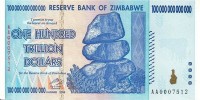 In 2010, any nation that has a weak currency has a very significant competitive advantage in global trade. A weak currency means that the products and services produced by that nation will be less expensive for other nations. Therefore other nations will buy more of those products and services. When exports go up, employment goes up and more wealth flows into the country. Alternatively, when the value of a national currency declines, exports do down, unemployment increases and less wealth flows into the country. Therefore, dozens of exporting nations around the globe have become increasingly determined to keep their national currencies very weak in an attempt to maintain a competitive advantage in the global marketplace. Essentially what we have is a race to the bottom among global currencies. Whenever any nation wants to gain a little bit more of an edge in global trade they push the value of their currency down just a little bit more. So who is the winner in all of this? Well, that is easy. Gold, silver and other precious metals will continue to be the winners as fiat currencies all over the globe continue to decline in value.
In 2010, any nation that has a weak currency has a very significant competitive advantage in global trade. A weak currency means that the products and services produced by that nation will be less expensive for other nations. Therefore other nations will buy more of those products and services. When exports go up, employment goes up and more wealth flows into the country. Alternatively, when the value of a national currency declines, exports do down, unemployment increases and less wealth flows into the country. Therefore, dozens of exporting nations around the globe have become increasingly determined to keep their national currencies very weak in an attempt to maintain a competitive advantage in the global marketplace. Essentially what we have is a race to the bottom among global currencies. Whenever any nation wants to gain a little bit more of an edge in global trade they push the value of their currency down just a little bit more. So who is the winner in all of this? Well, that is easy. Gold, silver and other precious metals will continue to be the winners as fiat currencies all over the globe continue to decline in value.
Quite a few nations have been openly manipulating their national currencies for many years, but now currency issues are starting to make front page news. Things are starting to get quite tense out there. Major importing nations are starting to resent the fact that they have been burned by all of this currency manipulation and major exporting nations are absolutely determined not to lose the economic gains that they have achieved as a result of their currency manipulation.
In recent months, nation after nation has been taking steps to weaken their national currencies. Every time another currency gets devalued the hostility in the global marketplace just seems to grow. In fact, Brazil’s finance minister recently was very honest about the fact that the nations of the world are now engaged in a very open “international currency war”….
“We’re in the midst of an international currency war, a general weakening of currency.”
So where does all of this end?
Well, to some the answer is to adopt a global currency. But let us hope that never, ever happens because it would be the end of economic sovereignty for every nation on the face of the earth.
To others, the answer is for the nations that are being taken advantage of to stand up and to declare that they are not going to take it anymore.
Perhaps the most glaring example of one nation taking example of another is what China is doing to the United States.
In my recent article entitled “Currency War” I described the effect that currency manipulation by the Chinese government is having on trade between the U.S. and China….
For years, China has kept the value of their currency artificially low. Even though China has made a few small moves toward a more free-floating currency policy, at this point China’s currency is still pretty much pegged to the U.S. dollar. It is estimated that the Chinese government is keeping China’s currency at a value about 40 percent lower than what it should be. This is essentially a de facto subsidy to China’s exporters.
By keeping their currency essentially pegged to the U.S. dollar at such a low value, China is able to flood the U.S. market with incredibly cheap goods and services. But this has created an absolutely massive trade imbalance. Today, the United States spends $3.90 on Chinese goods for every $1.00 that the Chinese spend on American goods. Jobs and wealth are flowing out of the United States and into China at a pace that is almost unimaginable.
The Chinese know that if they let the value of their currency rise substantially it would have a devastating impact on their economy. Chinese Premier Wen Jiabao was recently quoted in The Telegraph as saying the following about what would happen if the value of Chinese currency was to rise substantially….
“I can’t imagine how many Chinese factories will go bankrupt, how many Chinese workers will lose their jobs.”
So instead American factories get to go bankrupt and millions of American workers get to lose their jobs.
Is that fair?
Meanwhile, other nations around the world are busy debasing their currencies. For example, Japan recently made a 12 billion dollar move in world currency markets to debase the value of the yen.
Earlier this year, the Swiss National Bank experienced losses equivalent to about 15 billion dollars trying to stop the rapid rise of the Swiss franc.
It truly is a race to the bottom.
So who benefits?
Gold, silver and other precious metals of course.
Gold recently topped $1,300 an ounce.
Silver has been absolutely soaring.
Exporting nations such as China and India have been gobbling up gold and other precious metals every time there is a little bit of a dip. They are tired of piling up endless amounts of U.S. dollars and they are seeking to diversify into something more solid.
The trend toward gold and precious metals is so hot that one German firm that installs gold vending machines now has plans to introduce them into the United States later this year.
It seems like everyone wants gold right now.
Not that gold is any more valuable than it ever has been.
It is just that it is not going down in value like all of the fiat paper currencies around the world are.
This is not a good time to have faith in paper currencies – particularly the U.S. dollar.
Already the dollar has been slipping substantially and the Federal Reserve has not really even cranked up the next round of quantitative easing yet.
One of the easiest things to do when there are economic problems in a nation is to pump more paper money into the economy. More paper money gives people something to spend, it spurs economic activity, it helps exports (as described above), and it helps put people back to work.
Of course it also destroys the value of the currency, but we will get to that in a minute.
With millions upon millions of Americans out of work, and with millions of homes being foreclosed, and with poverty statistics soaring into uncharted territory, it is very tempting for our politicians in Washington to borrow even more paper money and to pump it into the economy in an attempt to get things going again. But right now an election is coming up and the Tea Party has raised such a ruckus about government debt that there isn’t much appetite for more “stimulus packages” right now.
Of course the truth is that “stimulus packages” never solve any of our long-term problems anyway. The reality is that they just give our economy a short-term “high” and make our long-term debt problems even worse.
Not that the U.S. government is not quietly up to some monkey business. On Friday, federal regulators announced a 30 billion dollar bailout of the nation’s wholesale credit union system.
Another bailout?
Just what we need, eh?
But in general, the U.S. government is not doing a whole lot more reckless spending right now.
However, the Federal Reserve can inject more paper money into the economy without the help of Congress. Under the guise of “quantitative easing”, the Federal Reserve makes up money out of thin air and pumps it into the economy by buying up U.S. Treasuries, mortgage-backed securities or anything else that they feel like buying.
So is this going to happen again any time soon?
There are all kinds of whispers on Wall Street that this is exactly what the Fed is going to do and that it is going to be massive.
And quantitative easing would probably stimulate the U.S. economy in the short-term.
However, it would also seriously damage the value of the U.S. dollar.
You see, the truth is that when more dollars are introduced into the system, the value of each existing dollar goes down.
It is called inflation, and it is a hidden tax on all of us.
Think of it this way. If you put five dollars away today and you anticipate that you will be able to buy two loaves of bread with it three years from now, you will be greatly disappointed if when that day arrives a loaf of bread now costs five dollars and you can only purchase one loaf.
When the purchasing power of the dollar declines, it is a tax on every single dollar in every single wallet and bank account in the United States.
Since 1913, the U.S. dollar has lost over 96 percent of its value. Unfortunately, as ever increasing mountains of paper money continue to be required to keep our financial system solvent, the rate of decline of the value of the dollar is only going to increase in the years ahead.
So when you are watching the news and you hear that the Federal Reserve has announced some more “quantitative easing”, you might want to watch your wallet because you are about to be taxed. Your dollars will still be there – they just won’t go as far as they used to.
But in the twisted global economic system that our politicians have created, if the U.S. does not devalue the dollar we will lose factories, jobs and wealth at an even faster pace.
How sick is that?
So do not put your trust in the U.S. dollar. In the end, it will fail.
So what do all of you think? Feel free to leave a comment with your opinion (sane of otherwise) below….

